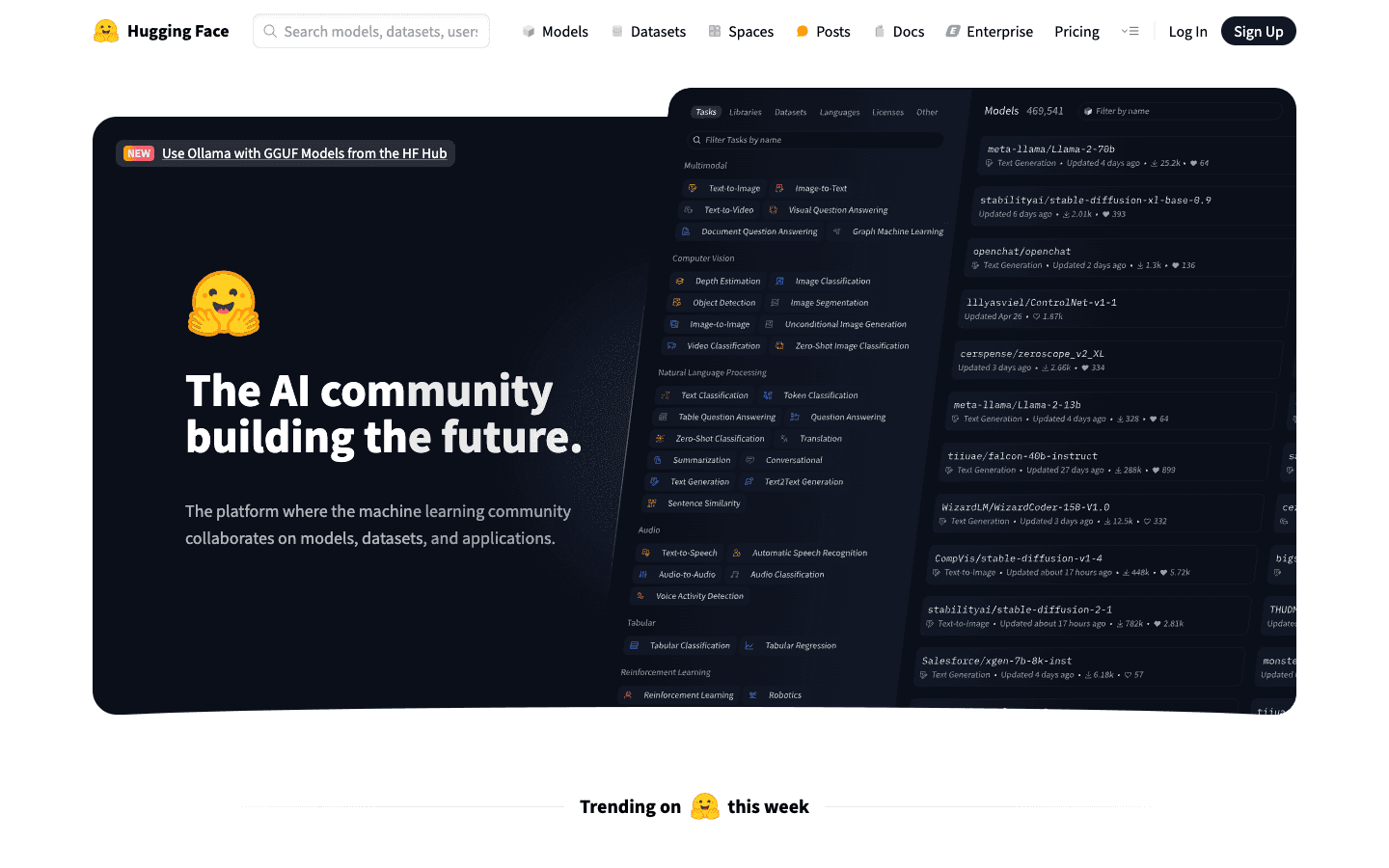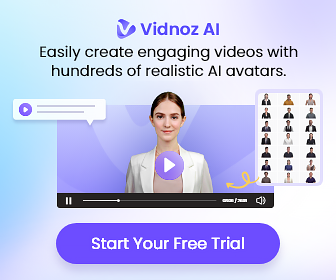
Hugging Face
The AI community building the future

Overview
Hugging Face is a pioneering platform in the field of artificial intelligence, particularly known for its contributions to natural language processing (NLP). Founded in 2016, Hugging Face started as a chatbot company but quickly evolved into a community-driven hub for machine learning enthusiasts and professionals.
The platform offers a comprehensive suite of tools, including the widely-used Transformers library, which provides access to state-of-the-art pre-trained models for various NLP tasks such as text classification, translation, and text generation. Hugging Face's Model Hub allows users to share and discover models, fostering collaboration and innovation within the AI community.
With a commitment to democratizing AI, Hugging Face empowers users to create, train, and deploy machine learning models with ease, making advanced technology accessible to everyone. Whether you are a seasoned data scientist or a curious beginner, Hugging Face provides the resources and support needed to bring your AI projects to life.
Core Features
- Access to pre-trained models
- User-friendly API for NLP tasks
- Collaborative Model Hub
- Extensive datasets library
- Community-driven support
- Integration with popular ML frameworks
- Real-time model deployment
- Customizable pipelines
Use Cases
- Sentiment analysis for customer feedback
- Chatbot development for customer service
- Text summarization for news articles
- Language translation for global communication
- Content generation for marketing
- Named entity recognition in legal documents
- Text classification for spam detection
- Speech recognition for voice assistants
- Image captioning using NLP
- Data augmentation for training datasets
Pros & Cons
Pros
- Open-source and community-driven
- Wide range of pre-trained models
- User-friendly interface
- Strong community support
- Regular updates and improvements
- Flexible integration options
- Robust documentation and tutorials
- Scalable for enterprise use
- Supports multiple languages
- Encourages collaboration and sharing
Cons
- Steeper learning curve for beginners
- Limited support for non-NLP tasks
- Performance may vary by model
- Dependency on internet for model access
- Resource-intensive for large models
FAQs
Video Review
Hugging Face Alternatives

Cursor
The AI Code Editor
![FLUX.1 [pro]](https://cdn.brouseai.com/logo/LjKDkTabCoBjQ9yqT998X.png)
FLUX.1 [pro]
State-of-the-art image generation with top of the line prompt following, visual quality, image detail and output diversity.
![FLUX.1 [schnell]](https://cdn.brouseai.com/logo/gAATMVVzTB-BCugiC3hVp.png)
FLUX.1 [schnell]
The fastest image generation model tailored for local development and personal use

Portkey AI
Control Panel for AI Apps

TensorFlow
An end-to-end platform for machine learning

Grok 2
Our newest AI assistant, powered by X

MindsDB
The middleware for building Custom AI
![FLUX.1 [dev]](https://cdn.brouseai.com/logo/B6GQOp69ZOm-Zte81GQnv.png)
FLUX.1 [dev]
A 12 billion parameter rectified flow transformer capable of generating images from text descriptions

Llama
Discover the power of Llama

Mistral AI
Empower Your Future with Mistral AI's Frontier Intelligence

Dynamiq
The Operating Platform for GenAI Applications

Mixtral 8x7B
Mistral AI’s second Large Language Model (LLM).

Prompt Mixer
Collaborative tool to create and test AI-powered solutions.

Context Data
Data Processing & ETL infrastructure for Generative AI applications

Zerve AI
A Unified Developer Space For Data Science and AI

MyChatbots.AI
Easily Train AI Chatbots On Your Data In Seconds

Gemma
A family of open-source, lightweight AI models.
Featured

Abacus AI
The World's First Super Assistant for Professionals and Enterprises

AI Text Summarizer
AI Text Summarizer That Rocks: Faster Content Analysis

Wan AI
Generate cinematic videos from text, image, and speech

Free AI Article Summarizer
Free Article Summarizer

Higgsfield AI
Cinematic AI video generator with pro VFX control

ChatGPT Atlas
The browser with ChatGPT built in

Sora 2
Transform Ideas into Stunning Videos with Sora 2

Blackbox AI
Accelerate development with Blackbox AI's multi-model platform

Animon AI
Create anime videos for free

Free AI PDF Reader
Free AI PDF Reader – Smarter Way to Understand Any PDF

AI Book Summarizer
AI Book Summarizer That Makes Books Easy to Grasp

Neurona AI Image Creator
AI image generator; AI art generator; face swap AI

Tidio
Smart, human-like support powered by AI — available 24/7.

Kimi AI
Kimi AI - K2 chatbot for long-context coding and research

Ask AI Questions Online
Ask AI Questions for Free – Smart, Fast, and Human-Like Answers

Google Nano Banana
Fast multimodal Gemini model for production

